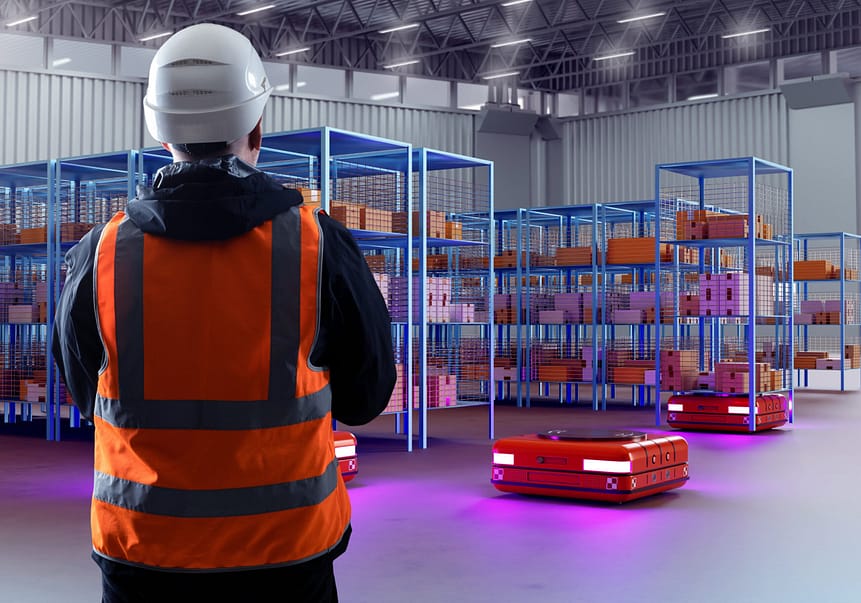Warehouse operations have historically been labor-intensive, but the landscape is rapidly changing. The evolution of warehouse robotics, from Automated Guided Vehicles (AGVs) to Autonomous Mobile Robots (AMRs), is reshaping the efficiency, safety, and scalability of warehouses and distribution centers globally. This transformation reflects broader trends in automation and artificial intelligence (AI), providing a glimpse into the future of logistics and supply chain management.
The Early Days: Automated Guided Vehicles (AGVs)
The journey of warehouse robotics began with Automated Guided Vehicles (AGVs) and has been around since the 1950s. AGVs are wheeled robots that follow fixed paths across warehouse floors, guided by wires, magnetic strips, or lasers. They were revolutionary, introducing automation into environments that were previously entirely manual. AGVs excel in repetitive tasks, such as moving materials between predetermined points, significantly reducing human labor and minimizing errors.
However, AGVs come with limitations. Their dependence on predefined paths means that any warehouse layout or operation change requires reconfiguring their guidance systems. This lack of flexibility has driven the search for more adaptable solutions to navigate dynamic environments without extensive reprogramming.
The Advent of Autonomous Mobile Robots (AMRs)
Enter Autonomous Mobile Robots (AMRs), the next evolutionary step in warehouse robotics. AMRs equipped with sensors, cameras, and AI algorithms allow them to understand their environment and navigate autonomously. AMRs dynamically alter their path to avoid obstacles, adjust to new layouts, and optimize workflows without human intervention.
AMRs represent a significant leap forward in warehouse automation, offering unprecedented flexibility and efficiency. They can perform various tasks, from picking and packing to inventory management, and easily integrate into existing warehouse management systems (WMS). Moreover, the scalability of AMR allows warehouses to adjust their robotic workforce based on demand, a critical advantage in today’s fast-paced, fluctuating markets.
Impact and Benefits
The impact of the transition from AGVs to AMRs on warehouse operations has been profound. AMRs lessen the reliance on manual labor and incredibly repetitive and physically demanding movements for tasks, thus reducing the risk of trauma and enhancing worker safety. They also improve operational efficiency, reducing the time it takes to move goods and process orders, which can significantly lower operational costs.
Moreover, the data collected by AMRs provide valuable insights into warehouse operations, enabling further optimization of workflows and inventory management. This data-driven approach helps warehouses respond more effectively to changes in demand, improving overall supply chain resilience.
The Future of Warehouse Robotics
The evolution from AGVs to AMRs is just the beginning. The future of warehouse robotics promises even more incredible advancements, with the potential integration of more sophisticated AI, machine learning algorithms, and perhaps collaborative robots (cobots) that work alongside humans. These technologies further enhance the adaptability and efficiency of warehouse operations, paving the way for fully automated, intelligent logistics systems.
Additionally, as sustainability becomes increasingly essential, future warehouse robots will likely be designed with eco-friendly operations in mind, utilizing renewable energy sources and optimizing processes to reduce waste.
MSI Automate
The evolution from AGVs to AMRs marks a significant milestone in the journey towards more intelligent, flexible, and efficient warehouse operations. As technology advances, our robotics will undoubtedly expand, offering new opportunities to improve productivity, safety, and sustainability for your warehouse. The revolution in warehouse logistics driven by robotics showcases the power of automation and emphasizes the critical role of innovation in addressing the challenges faced by today’s supply chain.

